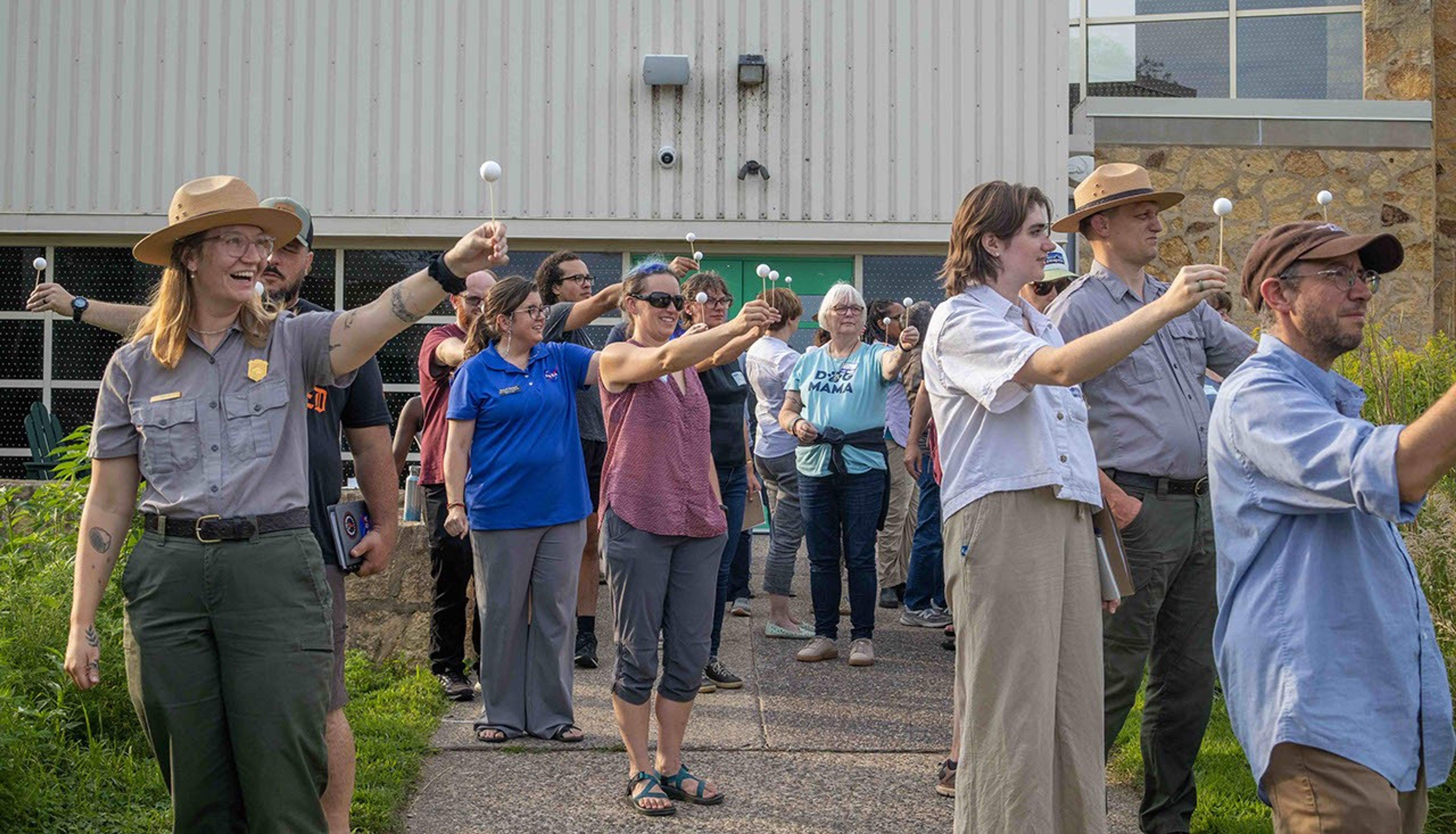Cassini is orbiting Saturn with a period of 23.9 days in a plane inclined 21.9 degrees from the planet's equatorial plane. The most recent spacecraft tracking and telemetry data were obtained on March 23, using one of the 70-meter diameter Deep Space Network stations in California. The spacecraft continues to be in an excellent state of health with all of its subsystems operating normally except for the instrument issues described at http://saturn.jpl.nasa.gov/news/significantevents/anomalies .
Cassini spent this week out near apoapsis in its orbit of Saturn. While any one of Cassini's optical remote-sensing (ORS) instruments was controlling spacecraft pointing, leading observations of its targets, other selected ORS instruments "rode along" at times, collecting and storing data on board for playback to Earth. The ORS instruments are the Imaging Science Subsystem (ISS), the Composite Infrared Spectrometer (CIRS), the Visible and Infrared Mapping Spectrometer (VIMS), and the Ultraviolet Imaging Spectrograph (UVIS). This week alone, ISS acquired and returned 970 images, and VIMS returned 295 "cubes," so called because every pixel in its two-dimensional image arrays has a "depth" of up to 256 spectral channels.
All the while, the Magnetospheric and Plasma Science (MAPS) instruments were taking data, at various rates, directly sampling and measuring the conditions in-situ.
Wednesday, March 16 (DOY 076)
Thirty-six hours of Saturn studies began shortly before midnight. "SA_WIND" appeared in the command timeline for the first activity, a high-resolution ISS observation. Scientists compare sequences of cloud feature images to measure the winds. As the planet rotated once every 10.6 hours, this five-hour activity repeated three more times over the next two days.
The ISS-led observations were interleaved and coordinated with CIRS observations. Abbreviated "SA_COMPSIT," the instrument's field of view would sit on a spot on Saturn, gathering spectral data on composition. Three of these CIRS observations occurred during the 36-hour period, for a total of 16 hours. Here is an illustration of Cassini's viewing geometry during the atmospheric study.
Thursday, March 17 (DOY 077)
Late in the day, ISS began a 90-minute observation in the Titan meteorological campaign. Alternatively called “Titan monitoring” campaign, these frequent observations routinely survey the huge planet-like moon for interesting atmospheric activity. Titan was 2.75 million kilometers away from the spacecraft.
Friday, March 18 (DOY 078)
UVIS had the spacecraft turn to point back towards Saturn, while it made a 16-hour observation in its study of hazes and organic compounds high in Saturn’s atmosphere, at the extreme- and far-ultraviolet (EUV-FUV) wavelengths. Next, CIRS began another COMPSIT, this one 14.6 hours in duration, targeting interesting latitude bands to obtain compositional and structural information about Saturn’s atmosphere.
Saturday, March 19 (DOY 079)
The Magnetometer (MAG), the Magnetospheric Imaging Instrument (MIMI) and the Radio and Plasma Wave Science instrument (RPWS) briefly increased their data-collection rates to study the more distant regions of Saturn’s magnetosphere, where the spacecraft was located today. Meanwhile, CIRS began a nearly 23-hour observation of Saturn at mid-and near-infrared wavelengths.
Sunday, March 20 (DOY 080)
The surprisingly diverse moons of giant Saturn have their unique characteristics, ranging from active geysers (Enceladus) to spongy appearance and low density (Hyperion) to crater-covered like our own Moon. This featured image shows a close-up of some detail on the surface of Dione: /resources/17357/ .
Monday, March 21 (DOY 081)
ISS checked in again with Titan today for a 90-minute monitoring observation; it was one million km closer than during the previous one. Next, ISS turned its telescopes towards Saturn's small, irregular satellite Surtur. This object is about 6 km in diameter, and was named after a fire giant in Norse mythology. It occupies an inclined, eccentric retrograde orbit that takes it almost 33 million km from the planet. The three-hour observation was one of Cassini's last ones dedicated to studying the rotational periods of unique objects like Surtur.
Cassini passed through apoapsis, marking the beginning of its orbit #234 of Saturn. The spacecraft had reached an altitude of 2.83 million km from the planet, slowing to 6,234 km per hour relative to Saturn.
Tuesday, March 22 (DOY 082)
UVIS executed another 16-hour EUV-FUV observation of Saturn. These observations are implemented on a routine basis to study the gas giant planet from several different geometries; this is key to deriving information about the atmosphere.
On three occasions during the week, the DSN communicated with and tracked Cassini, using stations in Australia and Spain. A total of six individual commands were uplinked, and about 1,030 megabytes of telemetry data were downlinked and captured at rates as high as 142,201 bits per second.


































